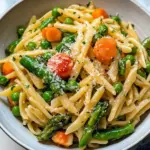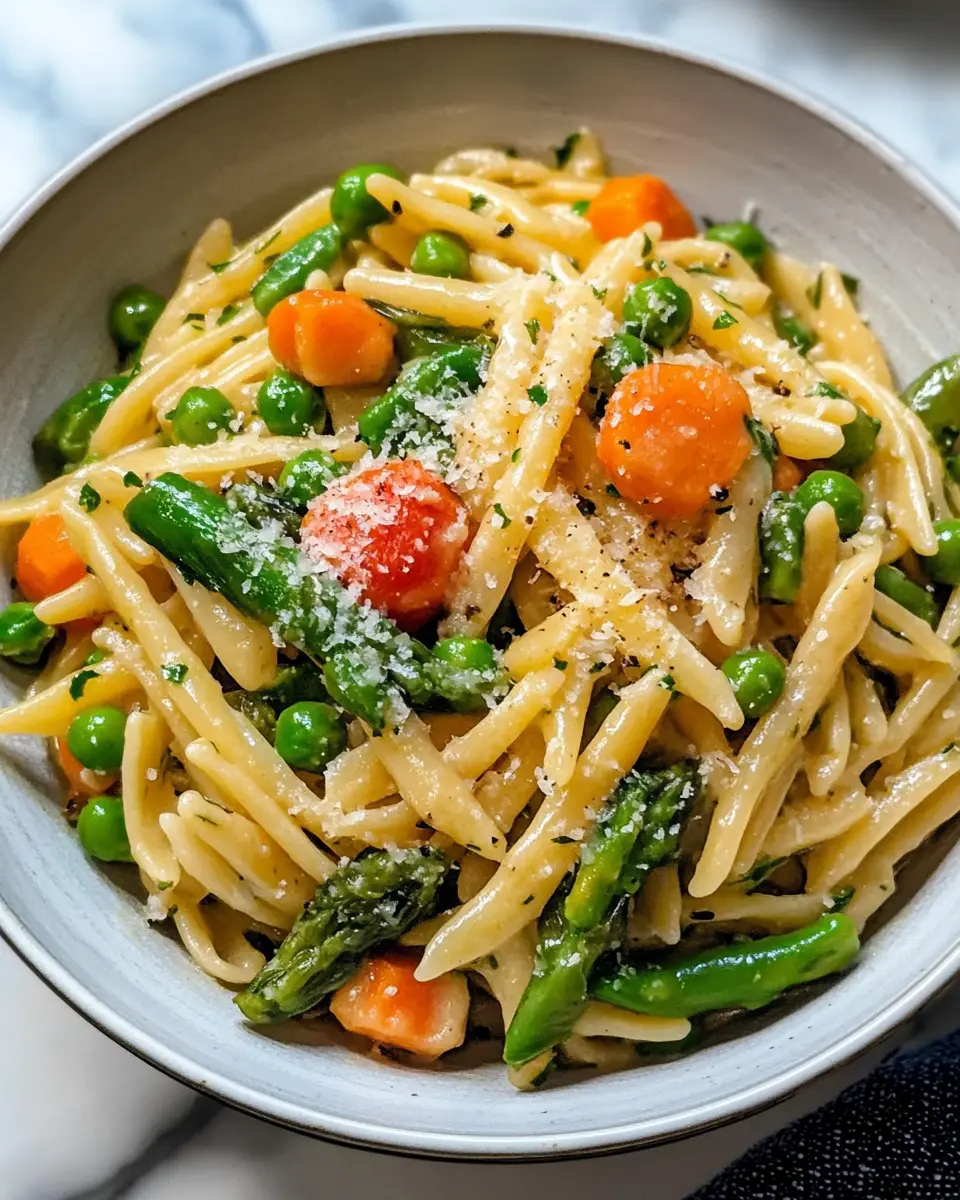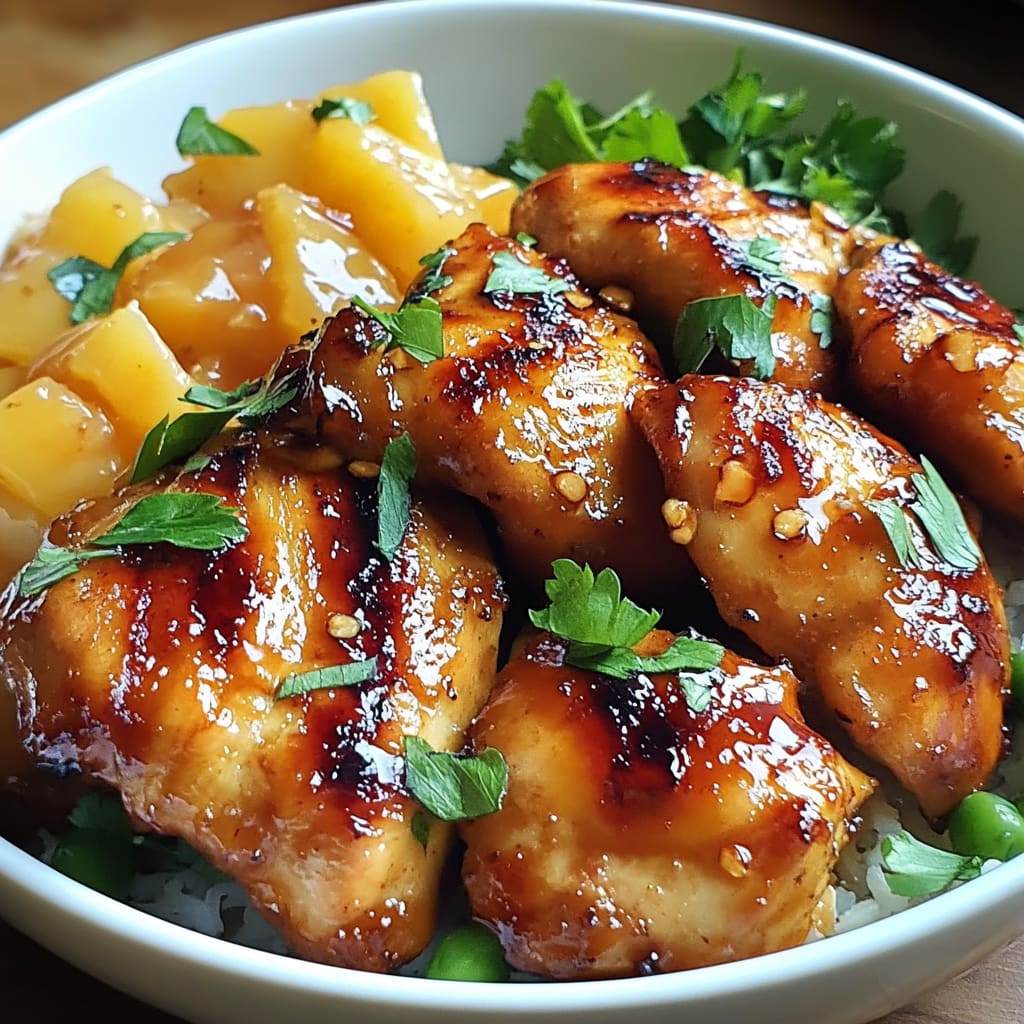Imagine twirling your fork through a plate of perfectly al dente pasta, coated in a light, lemony sauce with vibrant green vegetables that taste like pure springtime. This Spring Vegetable Pasta captures the essence of the season in every bite – crisp asparagus, sweet peas, and tender baby spinach dancing with fragrant herbs and a kiss of Parmesan. It’s the dish that celebrates nature’s bounty after winter’s long rest. You’ll learn how to create a restaurant-worthy pasta that balances freshness and comfort in under 30 minutes, making it perfect for both weeknight dinners and special occasions.
Why You’ll Love This Recipe
This Spring Vegetable Pasta is the epitome of seasonal cooking at its finest. The verdant vegetables provide a satisfying crunch against the tender pasta, creating textural contrast that keeps every bite interesting. You’ll appreciate how the bright lemon zest cuts through the richness of the Parmesan, balancing the dish perfectly.
What makes this pasta truly special is its versatility. It’s elegant enough for entertaining yet simple enough for a Monday night dinner. The entire dish comes together in one pot (plus a colander), minimizing cleanup and maximizing flavor as the pasta finishes cooking in the same pan as the vegetables.
Health-conscious cooks will appreciate that this dish delivers on nutrition without sacrificing taste. It’s loaded with fiber and vitamins from the spring vegetables while still providing that comforting pasta experience we all crave. The lightness of the sauce means you’ll feel satisfied without the heaviness that often accompanies pasta dishes.
Ingredients
For the Spring Vegetable Pasta, you’ll need:
• 12 oz (340g) linguine or fettuccine (dried)
• 1 bunch asparagus (about 1 lb/450g), woody ends removed, cut into 2-inch pieces
• 2 cups (300g) fresh or frozen peas
• 3 cups (90g) baby spinach, packed
• 3 tablespoons extra virgin olive oil
• 4 cloves garlic, thinly sliced
• 1 lemon, zested and juiced
• 1/2 cup (50g) grated Parmesan cheese, plus more for serving
• 1/4 cup (15g) fresh herbs (mint, basil, chives), roughly chopped
• 1/2 teaspoon red pepper flakes (optional)
• Salt and freshly ground black pepper, to taste
The star ingredients here are the spring vegetables – particularly the asparagus, which should be bright green and have tight, firm tips. For maximum flavor, use freshly grated Parmesan rather than pre-packaged options. Good quality olive oil makes a noticeable difference in this dish where the sauce is quite simple.
Pro Tips
Use Pasta Water Strategically: The starchy pasta water is liquid gold in this recipe. Reserve at least 1 cup before draining your pasta. This starchy liquid helps create a silky sauce that clings to the pasta instead of pooling at the bottom of your bowl. Add it gradually – you may not need the full cup, but it’s better to have extra than not enough.
Blanch and Shock Your Vegetables: For perfectly crisp-tender asparagus that maintains its vibrant green color, blanch it in the pasta water for just 2 minutes before the pasta is done, then shock in ice water. This stops the cooking process and preserves that beautiful spring green color while ensuring the vegetables don’t become mushy.
Balance Your Acid and Fat: The key to a restaurant-quality Spring Vegetable Pasta lies in the balance between acid (lemon juice), fat (olive oil and cheese), and salt. Taste as you go, adding a splash more lemon juice if it tastes flat or a drizzle of olive oil if it’s too tart. Remember that Parmesan adds saltiness, so adjust your seasoning accordingly at the final tasting.
Instructions
Step 1: Prepare Your Pasta
Bring a large pot of water to a rolling boil. Add 1 tablespoon of salt – the water should taste like the sea. Add your linguine or fettuccine and cook until 2 minutes shy of the package directions for al dente. You want the pasta slightly underdone as it will continue cooking with the vegetables. When the pasta has about 2 minutes left, add the asparagus pieces to the boiling water. Just before draining, add the peas for 30 seconds. Reserve 1 cup of the starchy pasta water, then drain the pasta and vegetables together.
Step 2: Create Your Flavor Base
While the pasta cooks, heat the olive oil in a large skillet over medium heat. Add the sliced garlic and red pepper flakes (if using), cooking until fragrant but not browned, about 1 minute. This infuses the oil with flavor that will coat every strand of pasta. Careful not to burn the garlic – it should sizzle gently, not brown.
Step 3: Combine Everything
Add the drained pasta, asparagus, and peas to the skillet with the garlic oil. Toss gently to coat everything in the oil. Add the spinach and lemon zest, tossing until the spinach begins to wilt. Pour in 1/4 cup of the reserved pasta water, stirring continuously. The starchy water will create a light, silky sauce that clings to the pasta.
Step 4: Finish the Dish
Lower the heat and add the Parmesan cheese, tossing quickly to distribute it before it clumps. Add more pasta water as needed to achieve a glossy coating on the pasta. Squeeze in the lemon juice and add the fresh herbs, giving everything a final toss. Taste and adjust seasoning with salt and pepper. The finished Spring Vegetable Pasta should look glossy, not dry or soupy.
Step 5: Serve
Transfer your Spring Vegetable Pasta to a large serving bowl or individual plates. Sprinkle with additional Parmesan and fresh herbs. Serve immediately while the contrast between the warm pasta and fresh, crisp vegetables is at its peak.
Variations
Creamy Spring Pasta: For a richer version of this Spring Vegetable Pasta, add 1/3 cup of heavy cream along with the pasta water in Step 3. The cream creates a luxurious sauce while still allowing the fresh vegetable flavors to shine through. Finish with a drop of truffle oil for an elegant twist.
Protein-Packed Option: Transform this side dish into a complete meal by adding protein. Toss in 2 cups of shredded rotisserie chicken or 1 pound of sautéed shrimp when you add the vegetables back to the pasta. For a vegetarian protein boost, add 1 can of rinsed and drained white beans or 8 ounces of diced smoked tofu.
Gluten-Free Spring Pasta: This recipe adapts beautifully to dietary restrictions. Simply substitute your favorite gluten-free pasta, being careful not to overcook it (gluten-free varieties can become mushy quickly). Rice noodles or chickpea pasta work particularly well with the light, fresh flavors of the spring vegetables.
Storage and Serving
This Spring Vegetable Pasta is best enjoyed immediately after cooking, when the vegetables maintain their vibrant color and pleasant bite. However, leftovers can be stored in an airtight container in the refrigerator for up to 2 days. When reheating, add a splash of water or broth and warm gently over low heat to prevent the pasta from drying out.
For serving, pair this bright spring pasta with a crisp white wine like Pinot Grigio or Sauvignon Blanc. A simple green salad with a light vinaigrette makes an excellent accompaniment, balancing the meal without overwhelming the delicate flavors of the pasta.
Transform this into an elegant dinner party starter by serving smaller portions in warmed shallow bowls, topped with a few shavings of Parmesan and a drizzle of your best olive oil. For a complete meal, add a protein (as mentioned in variations) and serve with crusty artisan bread for soaking up the delicious sauce.
FAQs
Can I make this Spring Vegetable Pasta ahead of time?
While best served fresh, you can prepare the components ahead of time. Blanch the vegetables and store them separately from the cooked pasta. Combine and finish the dish just before serving, adding extra pasta water or a splash of broth to refresh the sauce.
What other spring vegetables work well in this pasta?
Fresh fava beans, artichoke hearts, spring onions, and tender young zucchini all make excellent additions or substitutions. Adjust cooking times accordingly as some vegetables require longer cooking than others.
Is this pasta dish healthy?
Yes! This Spring Vegetable Pasta is packed with nutrients from the vegetables while being relatively light on fat and calories compared to cream-based pasta dishes. The balance of carbohydrates, vegetables, and small amounts of fat creates a satisfying meal that’s also nutritious.
Can I use dried herbs instead of fresh?
Fresh herbs really make this spring pasta shine, but in a pinch, you can substitute dried herbs at a ratio of 1 teaspoon dried for 1 tablespoon fresh. Add dried herbs earlier in the cooking process (with the garlic) to allow their flavors to bloom.
My sauce seems dry/watery. How do I fix it?
For dry pasta, add more reserved pasta water a tablespoon at a time, tossing until you reach the desired consistency. If too watery, add more grated Parmesan and continue cooking for another minute to thicken the sauce. The sauce should lightly coat the pasta, not pool in the bottom of the bowl.
Conclusion
This Spring Vegetable Pasta is comfort food reimagined for warmer days — bright, fresh, and satisfying without weighing you down. It’s the kind of dish that celebrates the season’s bounty while reminding us why simple cooking with quality ingredients often yields the most memorable meals. Whether you’re cooking for a special someone or treating yourself after a long day, this pasta delivers that perfect balance of comfort and freshness that makes seasonal cooking so rewarding. Let the vibrant colors and flavors transport you to an Italian countryside, where pasta is always al dente and vegetables taste of sunshine.
Print
Spring Vegetable Pasta
Description
Savor the freshness of spring with this easy, healthy vegetable pasta! Packed with seasonal greens and bursting with flavor, it’s a quick delight.
Ingredients
- 12 oz (340g) linguine or fettuccine
- 1 bunch asparagus (about 1 lb/450g), woody ends removed, cut into 2-inch pieces
- 2 cups (300g) fresh or frozen peas
- 3 cups (90g) baby spinach, packed
- 3 tablespoons extra virgin olive oil
- 4 cloves garlic, thinly sliced
- 1 lemon, zested and juiced
- 1/2 cup (50g) grated Parmesan cheese, plus more for serving
- 1/4 cup (15g) fresh herbs (mint, basil, chives), roughly chopped
- 1/2 teaspoon red pepper flakes (optional)
- Salt and freshly ground black pepper, to taste
- 1 cup reserved pasta water
Instructions
- Bring a large pot of well-salted water to a boil. Cook pasta until 2 minutes shy of package directions for al dente.
- When pasta has 2 minutes remaining, add asparagus to the boiling water. Add peas during the final 30 seconds of cooking.
- Reserve 1 cup of pasta water, then drain pasta and vegetables together.
- Meanwhile, heat olive oil in a large skillet over medium heat. Add garlic and red pepper flakes (if using), cooking until fragrant but not browned, about 1 minute.
- Add drained pasta, asparagus, and peas to the skillet. Toss to coat everything in the garlic oil.
- Add spinach and lemon zest, tossing until spinach begins to wilt. Pour in 1/4 cup pasta water and stir.
- Reduce heat to low. Add Parmesan cheese and toss quickly to incorporate. Add more pasta water as needed to create a silky sauce.
- Add lemon juice and fresh herbs, tossing to combine. Taste and adjust seasoning with salt and pepper.
- Serve immediately, topped with additional Parmesan and fresh herbs.








